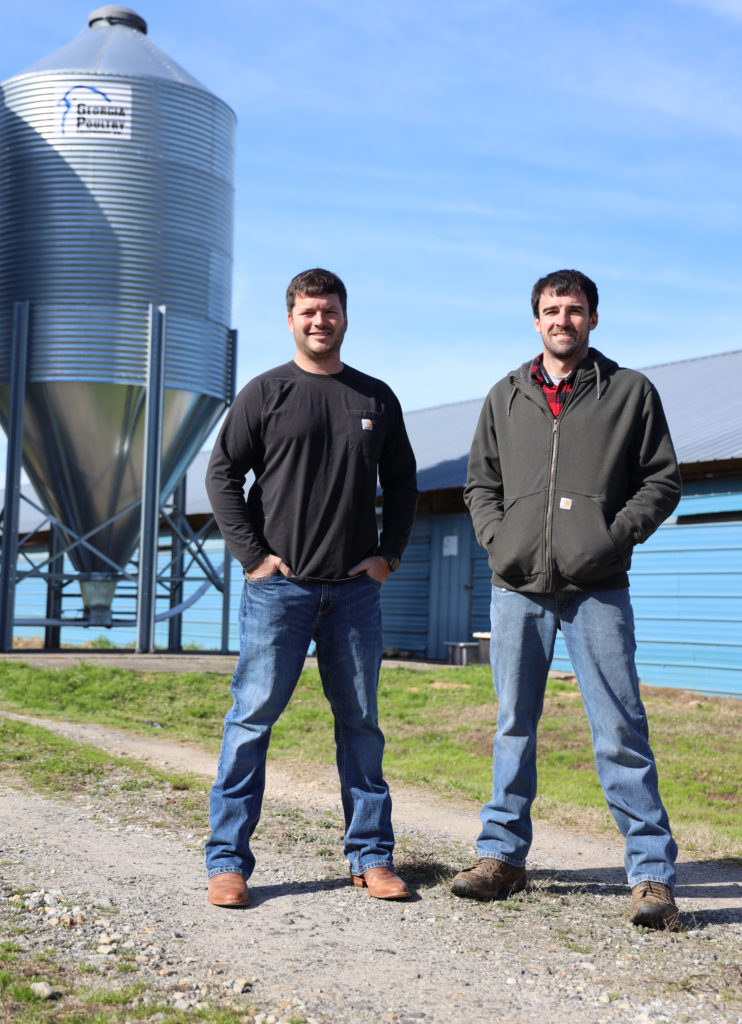Natural Gas A Game-Changer For Poultry Producers

By Marlee Moore
As Winter Storm Izzy pushed mid-January temperatures below freezing, poultry farmers Eric Lovvorn and Ben Hunt marked one concern off their to-do list — securing fuel to heat their eight chicken houses and 240,000 chicks.
That’s because natural gas is now pumped directly to their farms near Ranburne. The neighboring farmers converted from propane in 2021, a move saving time, money and stress, Lovvorn said.
“We don’t have to worry about running out,” said the 37-year-old Cleburne County Farmers Federation vice president. “The way fuel prices are going up across the board, the timing to have natural gas couldn’t be better.”
In January, natural gas was $1.15 a gallon. Propane contracts were $1.70 to $1.90, Lovvorn said, with some residential prices reaching $2.70.
The difference adds up as farmers can burn 100 gallons of fuel a day during bitter cold. It’s especially true with young flocks, which need 90-degree heat. Lovvorn and Hunt invest savings from fuel costs into energy-efficient improvements, such as LED lightbulbs, new brooders (heaters) and spray-foam insulation. Because of the upgrades, Lovvorn estimates their houses, built in 1989, will last at least another decade.
Excluding mortgage payments, heat is their largest bill. Poultry farmers routinely spend more than double their water or electrical bills on heat.
Before natural gas was pumped to their farm, thousand-gallon propane tanks fed into a line fueling each poultry house. Hunt and Lovvorn manually checked gauges to confirm on-farm supply. When winter storms threaten, Alabama’s more than 2,500 poultry farmers call propane companies to secure precious product.
“I never had an issue with our propane company, but propane is a limited product,” Lovvorn said. “You can only put so much in that tank, and everyone needs it.”
In 2014, a propane shortage shot prices to over $3 a gallon — if farmers could get it.
Lovvorn’s propane bill jumped from $3,000 to over $8,000 per flock.
“I couldn’t stay in business long paying over $2.50 a gallon for propane,” he said.
A cross-country natural gas line was just three miles from the farm, but interest was low to invest the million-plus dollars needed to build a pumping station and lay lines to reach Ranburne.
Lovvorn turned to the Alabama Farmers Federation. As a member of the Federation’s Agricultural Leaders For Alabama (A.L.F.A. Leaders) class, Lovvorn met statewide elected officials and leaders, including Alabama Public Service Commission President Twinkle Cavanaugh. Lovvorn credits her involvement for securing natural gas in his community.
“We’re forever indebted to Twinkle,” Lovvorn said. “She helped people in our area improve our livelihood.”
Listening sessions showed the natural gas company (now Spire) how the community craved its product’s security, availability and low price.
Cavanaugh said ensuring Alabama farms have the best, most economical energy options is a priority.
“Agriculture is the backbone of our economy, and anything we can do to grow it and support rural Alabama is good for the entire state,” she said. “This project will help create jobs and open up even more opportunities in the future. It was a real pleasure to play a role in making this happen.”
Back in Ranburne, pipes laid last winter tap into the old propane line, which directly feeds heat into chicken houses. Enlarged openings in each brooder accommodate natural gas’s different pressure. A meter tracks usage across the farm.
And once a month, Hunt and Lovvorn pay the bill.
“We have a lot of responsibility when it comes to raising these birds humanely,” Lovvorn said. “This is a game-changer for rural America.”
